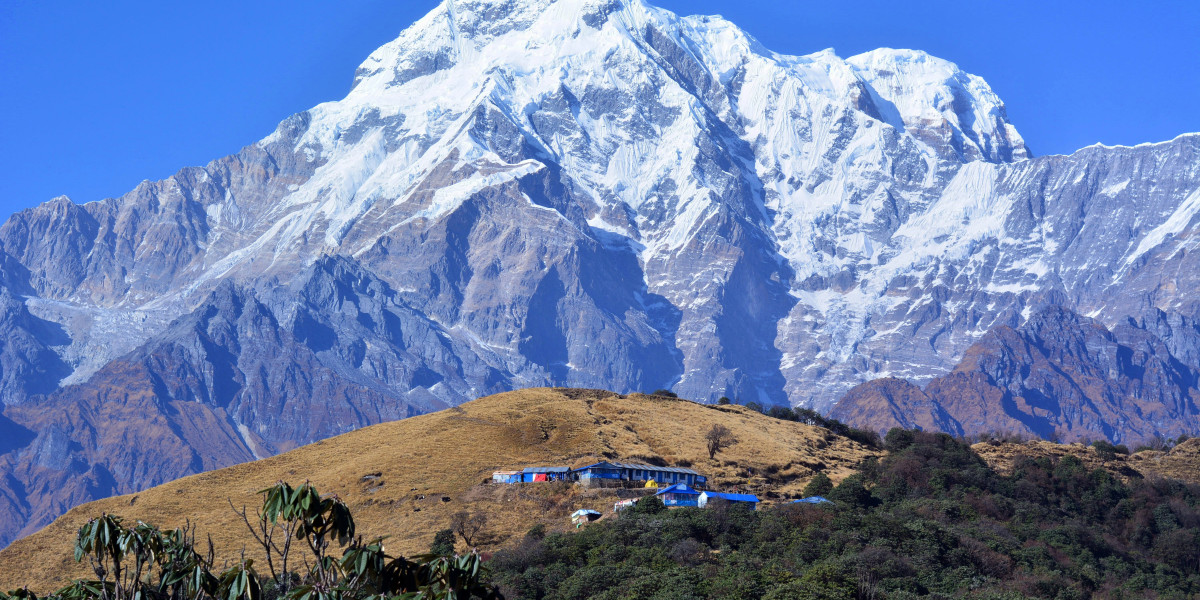Lobuche Peak, standing at an impressive altitude of 6,119 meters (20,075 feet), is one of Nepal's most sought-after trekking peaks. Situated near the Khumbu Glacier in the Everest region, Lobuche offers mountaineers an exhilarating challenge, breathtaking views, and a rewarding adventure. This comprehensive guide will walk you through everything you need to know about climbing Lobuche Peak, from preparation to reaching the summit.
Overview
Lobuche Peak comprises two main summits: Lobuche East (6,119 meters) and Lobuche West (6,145 meters). While both peaks are popular among climbers, Lobuche East is more frequently attempted due to its accessibility and slightly less technical nature. Despite this, Lobuche East remains a challenging climb that requires a good level of fitness, basic mountaineering skills, and acclimatization to the high altitude.
Getting There
The journey to Lobuche Peak begins with a scenic flight from Kathmandu to Lukla, a small town in the Everest region. From Lukla, climbers embark on a trek through the stunning landscapes of the Khumbu Valley, passing through iconic locations such as Namche Bazaar, Tengboche, Dingboche, and Lobuche Village. The trek itself takes around 8-10 days, allowing ample time for acclimatization and exploration of the region's natural and cultural beauty.
Preparation and Permits
Climbing Lobuche Peak requires careful preparation. Here are some key considerations:
Fitness and Training: Regular cardiovascular training, strength training, and endurance exercises are essential. Simulating high-altitude conditions by hiking at high elevations, if possible, can be beneficial.
Mountaineering Skills: Basic mountaineering skills, such as using crampons, ice axes, and rope techniques, are necessary. Many climbers opt for a pre-expedition training course.
Permits: Climbers need several permits, including the Nepal Mountaineering Association (NMA) permit, Sagarmatha National Park entry permit, and a TIMS (Trekkers' Information Management System) card. These permits can be arranged through trekking agencies in Kathmandu.
The Climb
The ascent of Lobuche Peak typically takes place over 2-3 days, starting from Lobuche Base Camp (4,950 meters). Here is a day-by-day breakdown of the climb:
Base Camp to High Camp: The journey from Base Camp to High Camp (5,400 meters) involves a steep ascent over rocky terrain. High Camp offers a strategic position for the summit push and provides stunning views of the surrounding peaks.
Summit Day: The summit push begins in the early hours, usually around midnight. Climbers navigate through steep snow and ice slopes, making their way to the summit ridge. The final section involves a challenging climb over exposed ridges, but the reward is unparalleled: panoramic views of Everest, Lhotse, Nuptse, Ama Dablam, and other towering giants of the Himalayas.
Descent: After savoring the summit experience, climbers carefully descend back to High Camp and then to Base Camp. The descent requires caution and focus, especially on the steep and icy sections.
Best Time to Climb
The best seasons for climbing Lobuche Peak are pre-monsoon (spring) and post-monsoon (autumn). Spring (April to May) offers stable weather, clear skies, and blooming rhododendrons, while autumn (September to November) provides crisp air, excellent visibility, and relatively stable conditions. Both seasons offer a high success rate for summiting.
Challenges and Rewards
Climbing Lobuche Peak is physically demanding and mentally challenging. High altitude, harsh weather conditions, and technical sections test climbers' endurance and determination. However, the rewards are immense:
- Spectacular Views: The panoramic vistas from the summit are unmatched, offering a sense of accomplishment and awe.
- Cultural Immersion: The trek to Lobuche Peak allows climbers to immerse themselves in the rich Sherpa culture and traditions.
- Personal Growth: Conquering Lobuche Peak is a significant achievement that fosters resilience, self-confidence, and a profound connection with nature.
Practical Information
- Accommodation: Teahouses and lodges are available along the trekking route, providing basic amenities and a warm atmosphere. At Base Camp and High Camp, tents are used.
- Gear and Equipment: Essential gear includes mountaineering boots, crampons, ice axes, harnesses, helmets, warm clothing, and sleeping bags. It's advisable to rent or purchase quality gear in Kathmandu.
- Guides and Porters: Hiring experienced guides and porters enhances safety and support during the climb. Many trekking agencies offer comprehensive packages that include guides, porters, permits, and accommodation.
Conclusion
Climbing Lobuche Peak is a thrilling adventure that combines the challenge of mountaineering with the beauty of the Everest region. With proper preparation, determination, and respect for the mountain, climbers can achieve an unforgettable summit experience. Whether you're a seasoned mountaineer or an avid trekker looking for your next big challenge, Lobuche Peak awaits with its majestic allure and the promise of a truly transformative journey.







